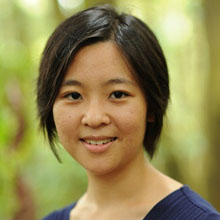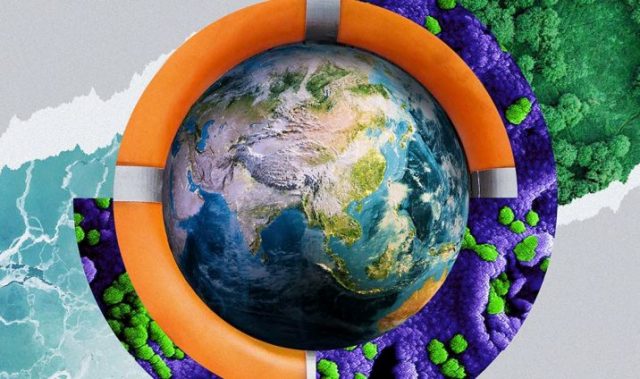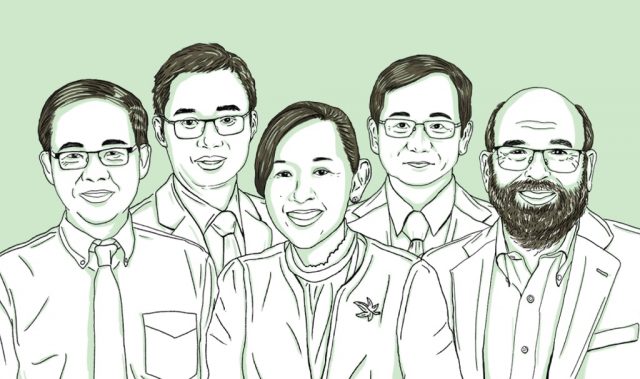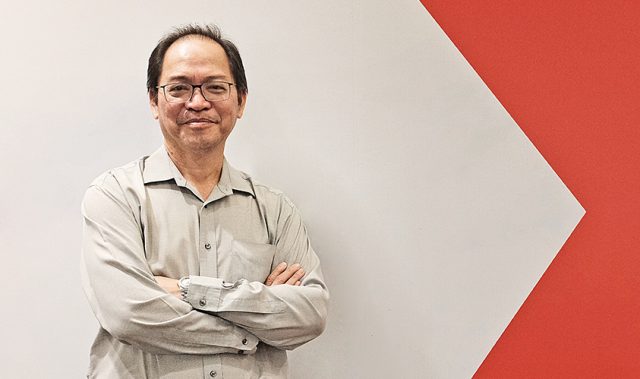
AsianScientist (Dec. 30, 2015) – How does an underwater mine shockwave travel through the sea towards its target? What happens to a pager when it is dropped from a certain height? And if a fire breaks out in an enclosed space, how does the smoke fill the room?
Lam Khin Yong, 58, chief of staff and vice-president for research at Nanyang Technological University (NTU), has explored or managed all these research questions and more in a three-decade career.
A professor of mechanical engineering, his expertise and consultancy work for companies has also helped secure more than S$200m of research grants and collaborations for the Singapore research community, including a S$75m lab with aerospace giant Rolls-Royce.
In other words, Professor Lam has managed to combine two successful careers: one as a hands-on scientist and another as one of Singapore’s preeminent research rainmakers.
Hungry from day one
As a young graduate student at the Massachusetts Institute of Technology, Professor Lam developed hydraulic fracturing methods—the same technology widely used in the oil and gas industry, especially for shale gas extraction today.
His research focussed on modelling a fluid as it travels through a narrow channel and interacts with its surroundings. He worked on a complete simulation of hydraulic fracturing in three dimensions, first understanding the basic physics behind fluid movement, then building mathematical models to explain how fracking would work under various field conditions.
With his advisor, Professor Lam developed software based on this work. It was later used by industry to simulate underground oil extraction.
Most importantly, he learned to be entrepreneurial.
“I think my MIT training gave me an added advantage,” he says. “My professor was always on the lookout for funding and I learned to be hungry from day one.”
When he graduated, oil and gas companies tried to recruit the newly-minted PhD, but he decided to return home in 1985 to be nearer to his family.
He joined the National University of Singapore (NUS), which at the time was just beginning to grow into a major research university.
But research funding was hard to come by at the time.
“There was no NSTB [National Science and Technology Board], no A*STAR [Agency for Science, Technology and Research], only the Science Council of Singapore,” he says. “It was one or two years before I got my first PhD student.”
A lucky break
In 1991, while working as the principal investigator on a project to model the effectiveness of civil-defence shelter doors, Professor Lam dreamt up his first big research project for Singapore.
Having served his reservist duty in the Singapore Navy, he was already familiar with its design and testing procedures for new vessels and equipment. Recognising the need for vessels to better withstand shock, Professor Lam and his team carried out computational modelling to simulate field conditions.
In 1993, his project proposal received a S$3.13m (S$4.6m in today’s dollars) grant—one of the biggest at the time—from the Naval Logistics Department and DSO National Laboratories. Thus was born the underwater shock laboratory at NUS.
Professor Lam, with support from his colleagues and students, used a mini supercomputer bought with the grant money to model shock waves and the resulting bubbles travelling through water, such as from underwater mine explosions, analysing their interaction with the surroundings. The research helped the Navy design naval vessels that could better withstand underwater shock.
Five years later, his team became the first led by a university academic to win the Ministry of Defence’s Defence Technology Prize for its work.
Beyond explosion simulations
One advantage of Professor Lam’s specialty, computational modelling, is that it is endlessly versatile.
“If you have the skills and the basic understanding of physics, you can apply these to any other domain,” he says. “Before computational modelling, you had to do experiments; these could tell you whether a design would pass or fail in the engineering sense, but computational modelling helps you understand its behaviour in various conditions.”
With the Navy as its first major client, word soon spread of Professor Lam’s underwater shock laboratory. This spawned several more industrial collaborations with firms such as Motorola and ST Kinetics.
For instance, in a project for Motorola, Professor Lam’s modelling was used to answer the question: how will a pager casing behave when it is dropped from a certain height? (In the process he surely saved the lives of many “crash-test” pagers.)
One memorable project, Professor Lam recalls, was modelling the ventilation system for the Esplanade’s theatres. His research questions included: how will cool air flow through the space to make the temperature even for all audience members? If there is a fire, where will the smoke go?
In all, between 1995 and 2007, Professor Lam helped secure more than S$30m of external, competitive research grants for computational mechanics work, from companies and organisations.
Over the years, advances in computing power have sped up modelling and simulation tasks. Supercomputers that once performed one million operations a second can now perform a billion times that, Professor Lam explains.
“Problems that seemed insurmountable years ago have become routine tasks,” he says. “And we now have the capacity to solve challenges in a virtual environment on a scale never dreamt of before.”
By 1998, the NUS centre for computational mechanics had merged with the national centre for supercomputing research and services to form the Institute of High Performance Computing (IHPC), under the auspices of the NSTB and later A*STAR. As the NUS centre’s founding director, Professor Lam also became founding director of IHPC, which studies the properties of materials and fluid movement. Its visualisation group is the first in Asia to have a three-dimensional immersive visualisation “cave”.
“The most interesting and fun years I had were when I was running IHPC,” he says.
“You are like a ‘super-PI’ [principal investigator, the lead researcher in a group], running research in your fields of interest and managing a large team. You, your colleagues and PhD students do basic research, but the results get adopted by companies and agencies.”
Despite his intimate knowledge of academia-industry collaborations, Professor Lam never really considered joining the private sector.
“It was always clear that my primary interests lay in academia,” he says. “I also enjoy forming research partnerships and naturally gravitated towards bringing like-minded researchers and industry counterparts in collaboration. Therefore, IHPC was a natural progression while I was in NUS.”
Following IHPC was a string of more administrative appointments, such as head of A*STAR’s graduate academy, to nurture students for science and engineering fields; chair of NTU’s school of mechanical and aerospace engineering; associate provost for graduate education and special projects; and chief executive officer of NTU Innovation. In these capacities, Professor Lam helped manage ever-bigger budgets and tasks.
Linking industry and academia
As NTU’s chief of staff and vice-president for research today, he helps to manage research in an array of fields. In 2013, for example, he helped the university secure a major collaboration with Rolls-Royce, a renowned British engine and power-systems firm.
But the S$75m lab, which studies electrical power and control systems, manufacturing and repair technologies, and computational engineering, is actually the product of a long courtship.
In 1999, the IHPC signed a research agreement with Rolls-Royce and Imperial College London. “We had a supercomputer in Singapore, but the data had to be couriered to Imperial in those days because the network link was not strong,” Professor Lam recalls.
Meanwhile, NTU and Rolls-Royce had been collaborating on an ad-hoc basis since 2005, but a long-term working relationship had yet to crystallise.
“Essentially, we needed to find a common platform and agree on thematic research areas that integrated the university’s mandate of basic research and innovation with Rolls-Royce’s emphasis on fast-tracking applications for commercialisation,” Professor Lam says.
So when the National Research Foundation announced its Corporate Laboratory scheme in 2013, in which major firms would co-fund dedicated research labs at local universities, NTU and Rolls-Royce were perfectly placed to work together. The Rolls-Royce@NTU Corporate Lab, jointly funded by the National Research Foundation, Rolls-Royce and NTU, was born.
“I believe it is our long partnership of trust and mutual understanding which allowed us to resolve any differences, and come to mutual agreement with relative ease,” he adds.
In April 2015, NTU and ST Engineering, a local engineering giant, announced a S$53m corporate laboratory in robotics and autonomous systems.
“It took me and my colleagues more than a year to get the lab proposal approved,” Professor Lam says.
Today, Professor Lam continues to help guide NTU’s research directions and hopes to be active for many years yet.
At a larger level, Professor Lam believes Singapore should strengthen its collaborations between universities, research institutes, national agencies and industry in a triple helix partnership, to create real research impact and innovation.
It should also continue efforts to get students excited about a science or engineering career.
“I hope these efforts will translate not only into creating a future generation of exemplary STEM [science, technology, engineering, mathematics] leaders and researchers at home but also create a generation of Singaporeans who are curious and appreciate the spirit of scientific inquiry and innovation,” he says.
This feature is part of a series of 25 profiles, first published as Singapore’s Scientific Pioneers. Click here to read the rest of the articles in this series.
———
Copyright: Asian Scientist Magazine; Photo: Cyril Ng.
Disclaimer: This article does not necessarily reflect the views of AsianScientist or its staff.













